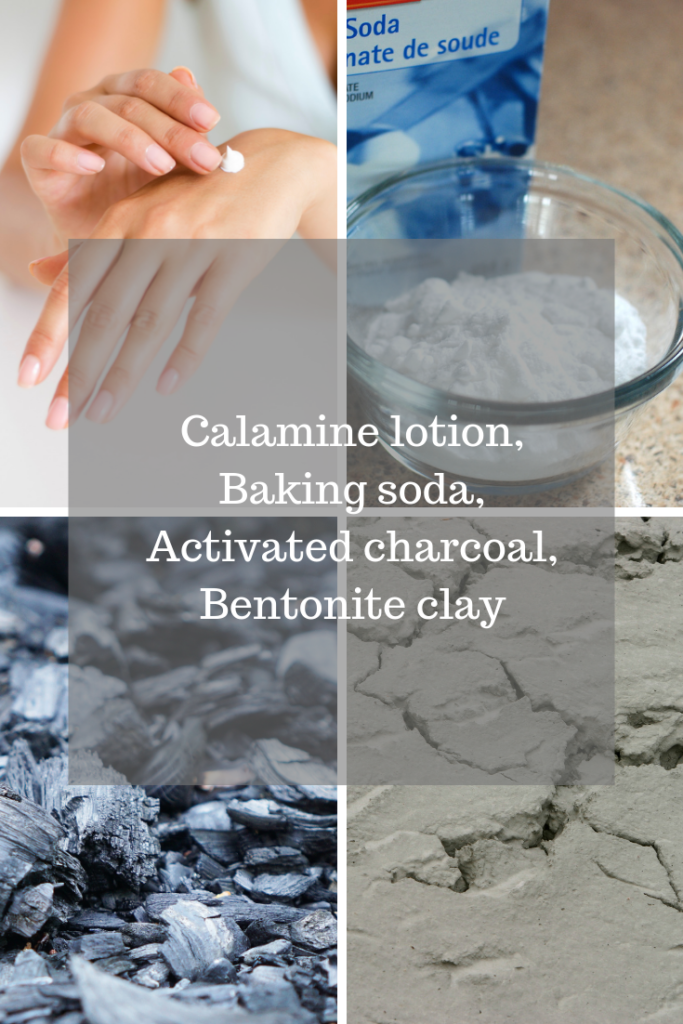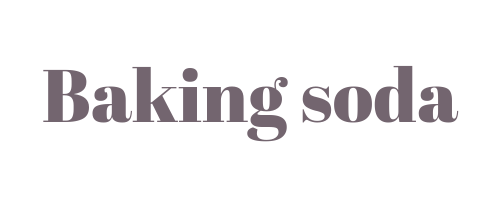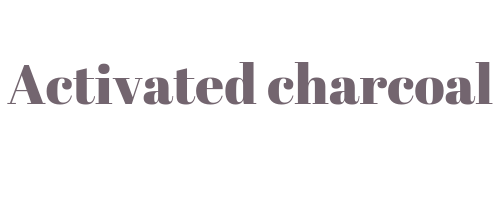

Calamine has been used since the 1930’s but no one seems to know where it came from.
In researching calamine for my book it appears that Traditional Chinese Medicine has used calamine for a long time so it is very likely it came to be used in western countries from Chinese immigrants sharing their home remedies.
Zinc oxide or zinc carbonate forms the base of calamine and the pink colour comes from trace amounts of iron. In it’s raw form it would be known as smithsonite. After being mined it then goes through a calcification process followed by some type of acid treatment.
In 1992 the US FDA announced that there was no proof that calamine was safe and effective as a topical treatment for bites and rashes, this was followed in 2008 by a recommendation that calamine is an effective treatment for itchy rashes and bites.
Calamine lotion is often readily available and low priced in North America, but for those who simply like making their own lotions or want a thicker cream to apply you can often find the plain powder at soap making suppliers.
Uses:
Topical only;
acne, chicken pox, diaper rash, eczema, impetigo, dermatitis rhus, drug-induced dermatitis, anal pruritus, blepharitis, dacryocystitis, sunburn, bites, ect...
Cautions:
In very rare instances some individuals experience skin irritation rather than soothing properties.
First aid:
If gotten in eye flush with clean saline solution for 15 minutes and seek medical attention.
If inhaled call emergency services.
If ingested call emergency services immediately because zinc chloride can form and perforate the intestinal tract.

A french chemist named Nicolas Leblanc produced sodium carbonate in 1791 for the first time, we also know it as soda ash in older documents that mention it's use. Commercial fishing in the 1800's was known to use baking soda to prevent spoilage of their catch.
Baking soda is made on the scale of 100,000 tonnes/year as of 2001 data. Baking soda is the refined product of nahcolite, this mineral is mined mainly in Colerado using similar methods to coal mines. The mined product must be refined, 2 primary methods are used; the Solvay Process and a more involved process using carbon dioxide. Solvay process only produces a product that is 75% pure while the second process produces a much more refined process.
Baking soda is used in the kitchen but is also useful as an effective antibacterial household cleaner.
Medicinally it can be mixed into water for oral infections and acid reflux. Hospitals will use intravenous baking soda in different cases of acidosis to correct the balance.
Topically it can be applied as a paste for relief of some bites and stings, it can also be effective for removing splinters that are buried deep but may need to be repeated a few times to bring it to the surface.
Uses:
Oral;
mouthwash, toothpaste, antacid, UTI relief (only relieves symptoms).
Topical;
bites, stings, rashes, splinter removal.
Home;
deodorizing, kill cockroaches, cleaning.
Cautions:
Do not get in eyes, abrasiveness can damage the eye.
Excessive oral intake can cause internal hemorrhage. https://www.ncbi.nlm.nih.gov/pmc/articles/PMC5017849/
First aid:
If gotten in the eye call emergency services and rinse eye with clean running water for 15 minutes.

Charcoal is “activated” by purifying it of any trace contaminants. This makes it significantly more absorptive when compared to non-purified charcoal. The purification process makes the structure of the charcoal extremely porous on the molecular level.
Activated charcoal is essentially a sponge made from burnt stuff. These sponge like qualities are taken advantage of in water filtration systems including in common household ones.
It is also used to great effect for treatment of diarrhea and poisoning. Hospitals administer 1 or more doses to prevent poisons from being absorbed. There are some limitations though, if the substance is on the more extreme ends of the pH scale (too acidic or too alkaline) it will not absorb them but may absorb any antidote if taken.
There is a couple of important things to know when using activated charcoal. The first being don’t take it if the poison was highly acidic or alkaline. Second is too high a dose can constipate you and the dose threshold is determined by your weight. Third is there are some drug interactions which will be listed on the Quick Reference Data Sheet.
As an interesting side note, brushing your teeth occasionally with activated charcoal is very effective for whitening them.
Also try to make sure any product you buy is JUST charcoal with no other ingredients.
Uses:
Topical;
A thin paste can be applied topically to minor chemical burns to prevent spreading of the substance.
Oral;
Teeth whitening, diarrhea, ingested for absorbing poisons. Proper dosing for poisoning use 0.5 - 1 gram per kg of body weight regardless of age.
Cautions:
Very high doses can cause constipation and bowel impaction.
Avoid use with highly acidic or highly alkaline poisons as it has no effect but may inhibit any antidote.
Drug interactions:
Naltrexone
Bupropion
Carbinoxamine
Donepezil
Fentanyl
Hydrocodone
Meclizine
Methadone
Morphine
Morphine Sulfate Liposome
Mycophenolate Mofetil
Mycophenolic Acid
Oxycodone
Oxymorphone
Suvorexant
Tapentadol
Umeclidinium
Also avoid use if intestinal issues are already present such as blockage, bleeding, or holes.
Long term use should only be done with the direction of your doctor.
First aid:
If inhaled seek emergency care immediately. If gotten in the eye, flush with running water for 15 minutes and seek medical attention. In all cases of poisoning call your doctor for guidance and inform them of any treatment given.
If bowel impaction is suspected go to emergency care immediately and explain.

Bentonite is an impure clay made up primarily of montmorillonite with other trace minerals. The name comes from Wilbur C. Knight who dubbed it “bentonite” in 1898 after the Cretaceous Benton Shale near Rock River, Wyoming.
This clay is highly absorbent, making it very useful for times when you need something “sucked up” like on itchy bites or poison ivy.
There are different types of bentonite depending on which trace element is dominant (calcium, potassium, sodium, or aluminium) and the name will reflect the dominant trace element. The type most consumers will come across is calcium bentonite.
The clay is formed from the weathering of volcanic ash, frequently in the presence of water.
Clay cat litter is actually made of this clay. Sodium bentonite is used to line landfills and other industrial applications such as oil drilling, casting molds for pouring molten metal into, it is also used for clarifying various oils and alcohols including red and white wines.
The most useful industrial application is in containing various types of toxic waste such as from large animal farming operations or nuclear waste.
Bentonite clay is mined all over the world with the USA producing almost one third of global production. The majority of calcium bentonite mined in the USA comes from Alabama and Mississippi.
This clay is also used for personal grooming products such as toothpaste and deodorants.
Uses:
Topical;
Applied as a paste it will absorb any toxic substances on the skin.
In the bath it can be used to pull heavy metals from the body and other chemicals and minerals. If used in the bath it is wise to have a mineral rich beverage afterwards to restore what was lost.
Internal;
Be certain of the source to avoid lead poisoning. Also know that other minerals can be depleted through this use.
Cautions:
If using internally make sure that the clay is free of lead (the metal). Lead should stay bound to the clay but trace amounts can leach out of the clay when consumed for some individuals.
Individuals who are very sensitive to sulfur should do a patch test prior first use. Typical reaction is a rash.
First aid:
If dry clay has been inhaled move to clear air. If breathing doesn't improve within a few minutes seek medical attention.
First image is pixabay, edited in canva by me. Headers are original